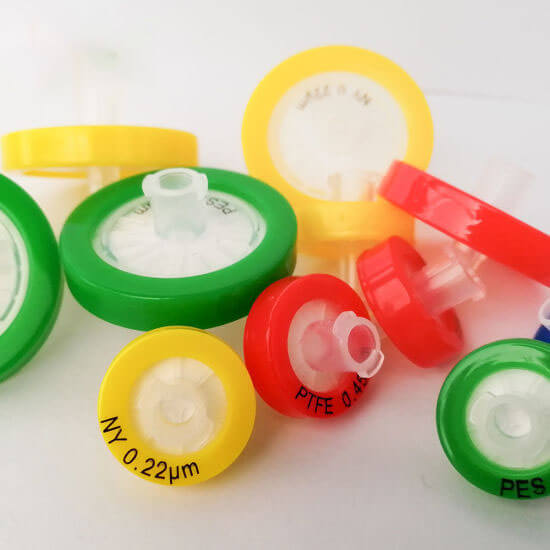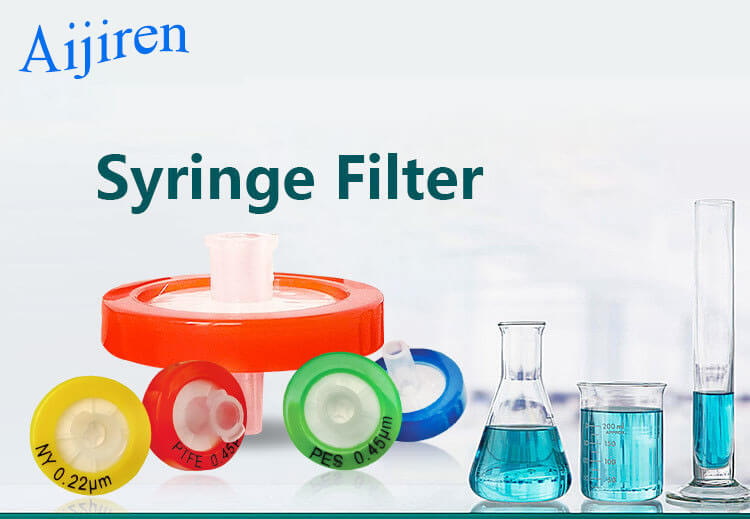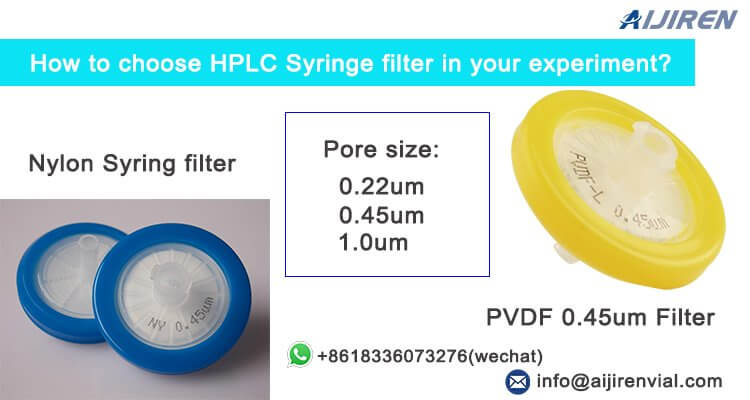What is the Difference Between PTFE and Nylon Filters?
Sometimes there is a bit of a misconception in the field regarding PTFE vs nylon membranes for filtration using syringe filter devices and which membrane can be used with different solutions and or solvents.
Nylon (polyamide) membrane syringe filters feature excellent chemical characteristics, physical strength, and a hydrophilic nature that make them a good choice for general laboratory use. They have a robust 25mm Ø housing of inert, low extractable, pigment-free virgin polypropylene. For aqueous and most solvent-based compounds these filters will serve well, with medium protein binding. Use with care for biological compounds.

PTFE (Teflon) membrane syringe filters have a hydrophobic nature and very high chemical resistance. As a result, these syringe filters are not compatible with aqueous samples. They have a robust 25mm Ø housing of inert, low extractable, pigment-free virgin polypropylene. A PTFE membrane is used to filter gases. Because of the chemical resistance, it is the membrane of choice for applications that include esterification of air or gas samples, HPLC solvents, filtration of aggressive solvents, sampling of aerosols, venting air, or protecting vacuum pumps.
PTFE as a membrane for syringe filters is considered to be more “chemically resistant” and nylon to be more “extractable free” for HPLC or dissolution testing. The simple explanation of the differences is that chemical resistance is defined as the durability of the membrane to withstand some harsh solvents (normally not used in HPLC or dissolution testing). The PTFE membranes still have extractable that usually dissipate or become undetectable after the first 2-3mls of filtrate are discarded but these membranes can have extractable seven after the first 2-3ml (which will vary from supplier to supplier based on the quality of PTFE used).

It should be noted that PTFE is hydrophobic by nature so most water-based solutions have a hard time penetrating the membrane and require excessive hand pressure to use. This back pressure can be circumvented by “pre-wetting” the membrane with methanol which will allow aqueous-based solutions to be filtered. Some filters will use surfactants in the PTFE membrane to make them more water compatible. If eluting surfactants are not of concern, this technology may work well.
Some solvents or solutions are not recommended for use with nylon membranes as they may “swell” the membrane and or make them weak in that the membrane may disintegrate or simply burst to allow the non-filtered solution to pass through. However, for other more compatible solutions (most HPLC solvents and solutions) nylon will provide the most “extractable free” membrane available and is hydrophilic which makes it good for use with water-based solutions. Many organic solvents are very compatible with nylon. Aldehydes and ketones, strong acids, and strong bases should be avoided when using nylon membranes.

Any questions, you can visit www.hplcvial.com and contact us.
Back to List
-
 下午4:09Weighing the Pros and Cons of PTFE/Silicone Septa
下午4:09Weighing the Pros and Cons of PTFE/Silicone Septa -
 下午4:05Decoding Vial Discard Guidelines: Ensuring Precision in Chromatography
下午4:05Decoding Vial Discard Guidelines: Ensuring Precision in Chromatography -
 下午5:01Navigating Micro Inserts for HPLC Vials: A Comprehensive Guide
下午5:01Navigating Micro Inserts for HPLC Vials: A Comprehensive Guide -
.jpg) 下午2:02Common faults and solutions of automatic samplers(2)
下午2:02Common faults and solutions of automatic samplers(2) -
 下午5:08Ensuring Sample Integrity: Navigating EPA Storage Vials Stability Guidelines
下午5:08Ensuring Sample Integrity: Navigating EPA Storage Vials Stability Guidelines

